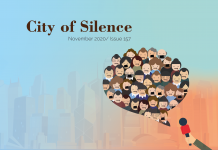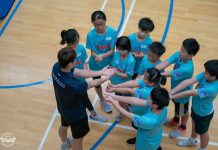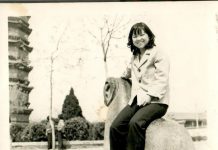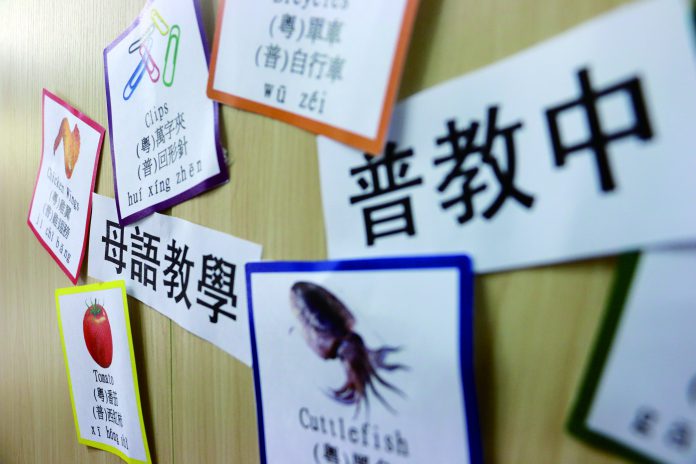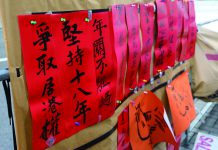Keeping up with changes to the medium of instruction in Hong Kong’s classrooms
By Angela Ng & Yi Yeung
Education issues have rarely been out of the headlines in the 20 years since Hong Kong’s handover. Some of the scenes we have witnessed include primary students tearfully describing the pressure of drills and cramming to the Legislative Council and parents collecting signatures to abolish the Territory-wide System Assessment (TSA) tests. Add to that the secondary students protesting against the switch to Putonghua in classes normally conducted in Cantonese and the 120,000 strong crowd surrounding the government headquarters to protest against national education in 2012. These scenes illustrate the controversy that has surrounded many of the education policies of the past two decades.
Sweeping reforms have been implemented in many areas of the education system, including school admissions, internal assessment mechanisms, student assessments and standardised test and the curricula. Another big area of change has been in the medium of instruction (MOI), with a widespread switch to mother-tongue teaching in 1998-9 and the active promotion of teaching Chinese in Putonghua (PMIC) in 2008, with the announcement of HK$200 million in funds to help schools make the switch from Cantonese in Chinese language classes.
According to the Education Bureau (EDB), 72 per cent of primary schools and 37 per cent of secondary schools were using Putonghua to teach Chinese by the school year 2015/16.
Some parents have welcomed the move as they think learning more Putonghua will give their children an edge. Lam Yuk-ying is one of them. “You must learn Putonghua, you always need it at work,” says Lam, “Practising more helps to build confidence in speaking Putonghua.”
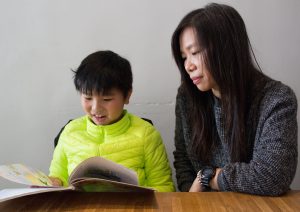
Lam says her eight-year-old son can now write sentences with fewer structural and grammatical mistakes and credits this to learning in Putonghua. In addition to his Chinese classes at school, Lam’s son also has one Putonghua lesson every week. He has no formal training in Cantonese even though he has a Chinese oral assessment in Cantonese at school every term. Lam says marks are deducted if written language constructions are used in the assessments, but she has no regrets about her son’s Putonghua-only Chinese learning.
Andrew Chan, convenor of a Cantonese language advocacy group, Societas Linguistica Hongkongensis, says the idea that PMIC leads to better learning outcomes for Chinese language is “a fallacy”.
“We should not set the language as MOI just because we want to learn that language,” says Chan. He acknowledges there is a practical need to learn Putonghua but he believes the nine years of Putonghua lessons from primary one to secondary three are more than enough for students to gain proficiency.
For Chan, PMIC contradicts the rationale of mother-tongue teaching, which had been embraced by the outgoing colonial Hong Kong government as a future goal, and by the first Hong Kong SAR administration which implemented a policy of mother-tongue teaching in 1998-9.
“Mother-tongue teaching emphasises learning in everyday life,” says Chan, “but PMIC tells you that what you say daily is wrong.” He suggests a few examples from daily life where objects are named differently in Cantonese and Putonghua. For instance, chicken wing is “gai yik” in Cantonese and “ji chi bang” in Putonghua.
Kwan Yin-lai, a Chinese language teacher teaching in Putonghua, agrees with Chan that teaching in Putonghua creates barriers to classroom learning. “Undoubtedly, the interaction between teachers and students is ‘livelier’ if the classes are conducted in Cantonese,” says Kwan.
Besides, Kwan disagrees with the assumption that learning Chinese in Putonghua necessarily enhances students’ understanding of Chinese language, especially in the study of Chinese literature. “Ancient texts and poetry before the Song Dynasty should be recited in Cantonese as this dialect has a closer resemblance to the ancient Chinese phonology,” says Kwan, “Only by learning texts in their closest phonology can one appreciate their beauty.”
In June last year, the Education Bureau (EDB) finally released the findings of a study it had commissioned between 2012 and 2015 on the efficacy of teaching in Putonghua. The release came after repeated calls for the findings to be made public when it emerged that it had been submitted to the bureau many months before. It revealed there was no evidence to show that it was more effective to teach Chinese in Putonghua rather than Cantonese. Despite the findings, growing opposition to wholesale PMIC and a trend for more secondary schools to switch back to Cantonese, the EDB insists it will stick with its policy of promoting PMIC as a long-term goal.
Another controversy surrounding the medium of instruction in Hong Kong schools is the policy on Fine-tuning of Medium of Instruction for Secondary Schools. Mother-tongue teaching was introduced after a series of studies and reports, including those conducted by overseas experts hired by the colonial government, showed that students learned better using their native language – in Hong Kong’s case, Cantonese. Most schools followed EDB guidelines when they were enforced in 1998-9, but some were allowed to keep using English as the medium of instruction (MOI), based on the ability of their teachers, students and support measures in place.
Since then, many parents have been keen to enroll their children in EMI schools as they believe that EMI is superior. However, in response to criticisms about the perceived deterioration in English standards and a call for more choices, the EDB introduced the fine-tuning policy in 2010-11. Under the policy, schools are given flexibility on which language to teach in, in which classes and to which students.
Wong Yuk-nam, a veteran secondary school science teacher says the implementation of mother-tongue teaching in Hong Kong has been a “disaster” because it meant a handful of EMI schools were seen as superior because of the perceived elevated status of English.
However, he is also opposed to “fine-tuning”. “CMI schools have been used to teaching in Cantonese,” says Wong. “It is hard to change [back] to EMI now.”
In Wong’s CMI school, the integrated science subject is taught in English in junior forms, whereas most non-language subjects are still taught in Chinese. However, when students can choose their own electives in senior forms, they will tend to avoid EMI subjects.
“Fine-tuning is somehow useless,” says Wong. He explains that students are either afraid of or are not capable of learning in English unless they are consistently exposed to an English learning environment. Wong would prefer to see schools teach in English and opposes mother-tongue teaching, but he thinks fine-tuning worsens rather than helps the problem of declining English standards. “I would rather ask students to study all subjects in Cantonese,” he says.
Lee Yuen-ying, a secondary five student in a CMI school, agrees with the rationale behind fine-tuning and says it does provide more English-learning opportunities. But she thinks its execution puts students in a bind. Lee studied biology in Cantonese in Form Four but chose the EMI class in Form Five.
“We completely acquired the knowledge in Chinese,” says Lee. “So we are unable to answer the examination paper in English even when I can think of the answer in Chinese.”
Of the 40 students who had originally chosen the EMI class, 36 switched to the Chinese class because “those studying in Chinese have much better academic results …We don’t want to get a lower grade because of our language skills,” says Lee.
As a student preparing to take public examinations, Lee understands the advantages of EMI classes as most lectures and classes in tertiary education in Hong Kong are in English. However, she also hopes she can get better grades by studying in Chinese.
Fung Wai-wah, president of the Hong Kong Professional Teachers’ Union, says: “The fact that more capable students can learn in English, doesn’t mean that they get better academic results because of EMI.” As a teacher, Fung thinks that mother-tongue teaching can better facilitate students’ communication and understanding.
However, he thinks the government’s fine-tuning policy exacerbates a mistaken impression that mother-tongue teaching is inferior to EMI. He says the misunderstanding came about when the government allowed the co-existence of EMI and CMI schools when mother-tongue teaching was launched.
“The Education Bureau should insist when there are good objectives and research to support the policy,” says Fung.
For Fung, the introduction of fine-tuning effectively puts an end to mother-tongue teaching by tacitly admitting that it was a false step that needs to be reversed. “Fine-tuning implies that you succumb to the situation. How then, can we propose mother-tongue teaching again?” asks Fung.
Looking back on the raft of changes to the education system over the last 20 years, Fung says policies were implemented too rapidly and teachers have found it hard to adapt to the messy reforms. “Teachers and schools are chasing the changes exhaustedly,” says Fung. “In many situations, they are forced to follow the policies even when they disagree with them.”
Joseph Wong Wing-ping, who was Secretary for Education and Manpower when the mother-tongue teaching policy was implemented, reiterates that the policy was launched with the support of the education sector and after exhaustive research.
“But the government and people from the education sector did underestimate parents’ opinion at that time,” says Wong. “We should learn a lesson from this execution.”
For Wong, every education policy should only be implemented after in-depth consideration and continuous evaluations. He takes the teaching of Chinese in Putonghua as an example.
“How can you implement PMIC suddenly without any reasons?” asks Wong, “Do the education reforms really help students after all? This is questionable.”
Wong says that instead of pushing ahead a policy arbitrarily when there are problems, the government should try to improve it.
“I remember clearly that one of the objectives of education reform was for students to find joy in learning,” says Wong.
Instead of joyful learning, Wong finds today’s students are taught to “drill and kill”. “Don’t we need an evaluation when we are getting off the track? I think it is worth reviewing,” he says.
Edited by Gloria Lee




